- Home
- Ian Buruma
Inventing Japan: 1853-1964 (Modern Library Chronicles) Page 12
Inventing Japan: 1853-1964 (Modern Library Chronicles) Read online
Page 12
The lessons of American culture were most effective when they were imparted on an unofficial and thus voluntary basis. After almost ten years of cultural deprivation and military propaganda, most Japanese were hungry for anything foreign and upbeat. During the war, “films about personal happiness” had been expressly forbidden in Japan. So Glenn Miller and Betty Grable probably did more for Japanese liberation than any number of high-minded lectures on demokurashii. Not since the late 1920s and early 1930s had there been such a taste for ero guro nansensu, the erotic, the grotesque, and the absurd: Strip shows were popular, as were pinup magazines with such exotic titles as L’Amour, Liebe, Nightclub, and Neo-Riberal (sic). Millions of people were hungry and homeless. Orphans were sleeping in the railway stations. But the big hit of 1948 was entitled “Tokyo Boogie-Woogie.” It went something like this:
Tokyo Boogie-Woogie
Rhythm. Wowie Wowie
My heart goes pit-a-pat. Tick-a-tack.
A song of the world. A happy song.
Tokyo Boogie-Woogie.
Despite temporary bans issued by puritanical officers of SCAP on “fraternization with indigenous personnel,” the first Japanese to get close to the American forces were the “pan-pan girls,” amateurs and professionals who “fraternized” with GIs in exchange for stockings, money, food, or simply a place to sleep. Loitering in the charred parks and swampy bomb craters of wrecked city centers, they dressed in cheap approximations of American fashions and mimicked the mannerisms of Hollywood stars. Envied and despised in equal measure, the pan-pan girls were among the pioneers of American commercial culture in postwar Japan—along with the children, who ran after every GI begging for chocolate and chewing gum, which were usually distributed with typical largesse from jeeps speeding through the ruins.
Intellectuals, disdainful of popular American culture, would turn to French literature for solace. A carefully cultivated air of nihilism was adopted by some of the more sophisticated men of letters. Marxism immediately made a comeback at the universities and in the coffee shops of Tokyo and Kyoto. But in whatever form or guise, arts and entertainment flourished under the occupation, despite petty rules of censorship, which were in any case not comparable to the suffocating restraints of the militarist years. Japanese didn’t have to be taught or encouraged to embrace intellectual and artistic freedom.
Culture was actually a bit of a red herring anyway. Japan’s problems did not stem from the Kabuki theater or Mount Fuji. The main problem was the emperor-centered kokutai, the sacred national polity in whose cause civil liberties had been crushed.
Fanatical concern about the preservation of the kokutai is what prevented the wartime leadership, including Emperor Hirohito himself, from conceding defeat before Hiroshima and Nagasaki. Some Americans, especially the conservative experts on the Japanese mind, had argued that the Allies should give in on this point. Joseph Grew, for example, the prewar U.S. ambassador to Japan, wanted the Allies to guarantee the continuation of the imperial line. Others, often of a more liberal disposition, believed that this would compromise any effort to get at the roots of modern Japanese militarism. This same tension continued under MacArthur’s administration, which was split between liberal supporters of Roosevelt’s New Deal and hard right-wingers. Most of the New Dealers were, like MacArthur himself, full of ideals but relatively ignorant about Japan. The right-wingers thought they knew a bit more. The fact that some of the latter, such as General Charles Willoughby (born Weidenbach), head of the intelligence section, had German roots is most probably incidental.
After the Japanese surrender in 1945, the Japanese government was led for two months by Prince Higashikuni Naruhiko, an unimpressive nobleman with strong ties to the imperial family. His deputy was Prince Konoe Fumimaro, who had been prime minister during the China war. Both men still hoped that the kokutai would carry on much as before, even without the Imperial Army. There would have to be some reforms, of course, but they should be slow and limited in scope. Higashikuni appointed some peculiar advisers. The man put in charge of the spiritual mobilization of the Japanese people, whose lack of spirit was blamed for the nation’s defeat, was Ishiwara Kanji, the plotter in Manchuria. In September 1945, he was still making speeches about the coming clash between Asia and the West. Another adviser was Kodama Yoshio, an uncouth right-wing fixer who had made a fortune in occupied China. In August 1945, Kodama was busy setting up brothels for the American troops, as well as finding ways to protect the old order. When SCAP decided in October to abolish the legal restraints on free speech and civil rights, Higashikuni decided that his time was up and resigned. Ishiwara, rather to his own surprise, escaped being indicted as a war criminal and died in 1949. Kodama was charged with war crimes, spent some time in jail, but continued to play a shady role in right-wing politics until the mid-1970s, when he was exposed in a major corruption scandal.
Right-wing ideologues, war criminals, and reactionary princes were not the only ones who tried to protect the kokutai. More important were the men identified by American diplomats as “moderates,” such as Yoshida Shigeru, a flowery Anglophile who had picked up some Churchillian manerisms in the 1930s when he served as ambassador in London. Regarded as a typical prewar liberal, Yoshida was foreign minister in Higashikuni’s cabinet and became prime minister in 1946. In temperament and style, Yoshida belonged to the Taisho period. The extreme militarism of the late 1930s and early 1940s had been, in his view, an unfortunate but wholly untypical episode in Japan’s development as a modern state. The best thing would be to revert to the kind of system that existed before it was hijacked by the military, when Japan was governed in a quasi-democratic manner by a paternalistic civilian elite. The imperial system would remain, of course, and a fully fledged American-style democracy would not be appropriate to Japan. However liberal he’d been before the war, in postwar terms, this made him a conservative.
Yoshida found allies for his conservative views in MacArthur’s administration, but not among SCAP’s New Dealers. A shrewd manipulator of American differences, Yoshida divided SCAP officials into “idealists” and “realists.” SCAP himself was typically ambivalent. He encouraged such early measures as the dissolution of the zaibatsu, the abolition of the thought police, full voting rights for women, the release of communists and other political prisoners, the establishment of independent trade unions, and, most important, the promulgation of a new, liberal constitution. Japanese leftists and liberals greeted these reforms with delight. Yoshida and his fellow conservatives were not happy at all but were powerless to stop them. Concerning the emperor, however, there was a convergence of Japanese and American aims. SCAP’s views on the emperor’s future role were not the same as Yoshida’s, let alone those of more right-wing Japanese, but he was just as keen to protect the throne.
This is well illustrated by a small but shabby example of occupation censorship. In 1946, the left-wing director Kamei Fumio made a documentary film entitled The Japanese Tragedy. Old newsreels, newspaper cuttings, and photographs were spliced together in a collage to expose the nature of Japanese wartime propaganda. The film includes several images of Hirohito, in and out of uniform, and the question of his war guilt is plainly addressed. The Japanese Tragedy passed the censors and was shown in a few provincial cinemas before its intended release in Tokyo. Suddenly, however, the U.S. censors banned the film after all. The reason for this turnabout was that Yoshida had objected to it and used his contacts with General Willoughby’s staff to get SCAP to stop the film from being screened. Willoughby was an open admirer of General Franco; indeed, after his stint in Japan, he became his adviser. He also enjoyed excellent relations with Emperor Hirohito’s court and was a regular guest at imperial duck shoots.
The reason given for the ban was that the film’s “radical treatment” might “well provoke riots and disturbances.” SCAP had used the same excuse for keeping the emperor on his throne. The Australians, the British, and the Soviets wanted to charge Hirohito with war crimes. MacArthur alwa
ys maintained that Japan would be ungovernable without him. This fitted his idea of Japanese as childlike people who would run amok without imperial guidance, but was it really so? Members of Hirohito’s family had expected him to abdicate and take moral responsibility for the war. Opinion polls taken at the time suggest that most Japanese would have gone along with this and perhaps even welcomed it. It was SCAP himself who insisted otherwise. Like the shoguns in pre-Meiji Japan, he wanted to use the emperor as a symbolic presence, a kind of shrine to legitimize his own authority. One reason Prime Minister Yoshida and other conservatives ended up agreeing to all SCAP’s reforms was their fear that this shrine, and thus the last vestige of the kokutai, would be taken away before they could use it for themselves.
First, however, SCAP had to strip the throne of its political authority and religious mystique. This involved institutional and constitutional changes: Shinto ritual was to be separated from state affairs, and the emperor was to become a “symbol of national unity” instead of being a divine priest-king. It also involved a masterstroke of public relations. The transformation of the emperor was symbolized in one official photograph, taken when the emperor arrived for an audience with SCAP at the U.S. embassy in September 1945. MacArthur, in an open-necked shirt, his hands lodged easily in his hip pockets, towers over the diminutive monarch, standing stiffly at attention in his formal morning coat, his mouth slightly open. The photo was released to all the Japanese papers. You had to have been very obtuse to miss the true nature of U.S.-Japanese relations.
In January 1946, Hirohito, coached by his American tutors, renounced his divinity, much to the disgust of Japanese conservatives. One month later, Japan had a new draft constitution. It had not been an easy birth. To begin with, SCAP asked Japanese jurists to revise the old Meiji constitution. The jurists were distinguished “moderates,” often, like Yoshida, with Anglophile reputations. But they were trained in the German legal tradition. American notions of popular sovereignty were strange to them. None of them really saw any point in changing the Meiji constitution. They tried to convince the Americans that the Meiji constitution was part of Japan’s ancient tradition, which could not be replaced by a product of a very different civilization. There was talk of plants that grow only in certain types of soil. They appear to have lost sight of the fact that the Meiji constitution was largely Prussian in origin. In any case, they did little more than tinker with it. When their efforts were leaked to the press, most Japanese treated them with contempt. So much for ancient traditions.
After the Japanese jurists were dismissed, MacArthur instructed his government section chief, Courtney Whitney, who had been the general’s lawyer before the war, to assemble a team of Americans to draft the constitution. They had a week to complete the task. The Americans, cloistered in the ballroom of SCAP’s general headquarters, were young and inexperienced. Beate Sirota, a twenty-two-year-old Jewish woman born in Vienna, was in charge of social rights. To learn how these things were done, she borrowed copies of other constitutions from the library. The Soviet and the Weimar constitutions turned out to be the most useful. A young ensign, Richard Poole, was told to draft the provisions about the emperor’s new status. It was he who turned the emperor from a human deity into a “symbol.” Beate Sirota managed to secure special provisions on women’s rights.
The translated version of the constitution reads awkwardly in parts, but it proved to be one of the most popular and durable products of the occupation. Conservatives such as Yoshida didn’t like it, but they put up with it and later learned how to use it to their advantage. But there was one section of Japanese society, a small but at times vociferous and influential section, that positively hated it: the hard Right. They were unhappy about the emperor’s new status as a mere symbol, but outraged by the most radical innovation, Article 9, which took away Japan’s sovereign right to maintain its own armed forces and wage war. Even the young Richard Poole questioned the realism of constitutional pacifism, but he was quickly told that the instruction had come from the general himself. So that was that.
Alienating the hard Right was in any event not of great concern in 1946. Most Japanese were quite content never to have to fight another war. Besides, Article 9 allowed them to bask in the warm glow of moral satisfaction: the first pacifist nation in history. But this great symbol of early postwar idealism had the unintended consequence of perpetuating one of the main problems of the Meiji state. The Rescript for Soldiers and Sailors of 1882 mandated that the Imperial Armed Forces owed their loyalty to the emperor and not to the state. This lifted matters of war out of parliamentary politics to the more exalted but unaccountable level of the imperial throne. Since the United States would take care of Japan’s military affairs from now on, the unaccountable throne had simply moved to Washington, D.C. This might have made many people, in Japan as well as outside, feel safer, but it did nothing to strengthen Japanese democracy in an area where it was really needed.
—
Reforming the Japanese mind also involved a history lesson. Punishment was not enough; the Japanese had to be shown clearly what they had done wrong. All over east Asia and Southeast Asia, Japanese who had carried out the holy war’s dirty work were hanged or incarcerated, not always after fair or scrupulous trials. But the grand reckoning took place at the former headquarters of the Japanese army in Tokyo, the same place where the novelist Mishima Yukio would disembowel himself a couple of decades later. From May 1946 until November 1948, justices from eleven Allied nations, including the Soviet Union, sat in judgment of the generals, politicians, and diplomats who had waged war in the name of the emperor. They included the general in charge of the rape of Nanking, some of the men who plotted to take over Manchuria, the leaders who planned the attack on Pearl Harbor, the prime ministers and diplomats who prosecuted the war in China and Southeast Asia, a right-wing ideologue (who feigned madness and was excused), and the man who was the emperor’s closest adviser. The only one missing from this sorry bunch was the emperor himself.
The International Military Tribunal for the Far East was modeled after the court at Nuremberg. As in Nuremberg, new laws against plotting and carrying out the invasion of other countries were applied retroactively, and justice was dispensed in the name of “civilization” by a bench that included one of Stalin’s henchmen. Like the Germans, the Japanese were charged with crimes against humanity, a new category devised in response to the Nazi genocides. Parallels between the German and the Japanese wars were crudely drawn. The Nanking massacre, one of the most shocking episodes of the Japanese war, took on the symbolic weight of Auschwitz, even though the Japanese government had never had a policy of systematic genocide. The demoralized men staring blankly at their accusers in Tokyo were, on the whole, rather different from the Nazis in Nuremberg. Göring, Hess, Ribbentrop, Frank, and others had been part of a criminal regime that grabbed power in 1933. The defendants in Tokyo were in many cases highly educated gentlemen of the old civilian elite that had governed Japan before the war began. The others were military men.
There was no Japanese equivalent to the Nazi Party, or Hitler. The Japanese were guilty of many crimes, but they were committed in the name of the kokutai, with the emperor as its divine leader. Every soldier and sailor had received imperial instructions to “consider an order from your superior to be an order from Myself.” But since SCAP had decided that the emperor was innocent and had to be kept out of the trial, even as a witness, the Tokyo history lesson was given a mendacious and politically damaging twist. The “militarists” had to carry all the blame. They had led the emperor astray, just as they had misled the Japanese people. The fact that Hirohito had often been better informed than his generals was glossed over, as was the considerable popular enthusiasm, at least in the early stages of the war, for military adventures abroad. And if the man who had been formally responsible for everything was innocent, it was hard to see how those who thought they were following his sacred orders could be found guilty.
The trial
was broadcast on Japanese radio and exhaustively reported in the press. But most people were too hungry to care about history lessons for very long. To be sure, news of the massacres in Nanking, Manila, and countless other places came as a shock, as did the evidence of official lying all through the war. Few ordinary citizens felt much sympathy for the class A war criminals. Most thought that they had got their just desserts. Since they had led Japan to a catastrophic defeat, they should take the consequences. But SCAP’s protection of the throne had obscured the most important lesson of all—the questions of political responsibility, the nature of the kokutai, the link between imperial ideology and crimes against other Asians. If all Japanese, except for the militarists, were as innocent as their emperor, they were victims. And if the killing of civilians in China was a crime, then so were the bombings in Hiroshima and Nagasaki, or indeed Tokyo, Osaka, and all the other Japanese cities. In short, SCAP had let the Japanese off the hook.
Only once did the truth threaten to upset the carefully stage-managed trial. In December 1947, Tojo Hideki took the stand. Prime minister at the beginning of the war in the Pacific, General Tojo, with his round tortoiseshell glasses, shaved head, and buckteeth, was the favorite American caricature of the evil Japanese, the Fu Manchu, as it were, of Japanese militarism. People paid black market prices to watch his performance in the dock. Although he took personal responsibility for losing the war, unlike his colleagues, he made a dangerous slip. “None of us [Japanese],” he declared, “would dare act against the emperor’s will.” The cross-examination was cut short. Pressure was put on him to revise his testimony, and a week later Tojo dutifully stated that the emperor had always loved and wanted peace.
On December 22, 1948, a cold, gray day, seven of the Japanese defendants, including Tojo, were hanged at Sugamo prison after a simple meal of cold rice and sake. The prison was demolished in the 1970s, and on the place of the gallows arose a tall skyscraper named Sunshine Building. General Tojo is still remembered; he was depicted as the hero in a popular war movie in the 1990s. But the rest, Araki, Itagaki, Kido, and so on, are largely forgotten figures now. The Japanese who dwell on the Tokyo trials are the same ones who wish to revise Article 9: right-wing historians, journalists, and politicians who reject the notion that Japan was any more guilty than other nations involved in the war. They dismiss the history lesson that emerged from the trial as U.S. propaganda, which was subsequently, in their view, parroted by the Japanese Left.

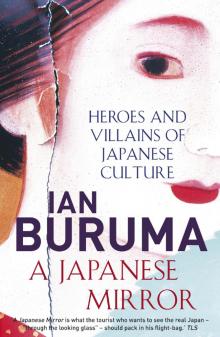 A Japanese Mirror
A Japanese Mirror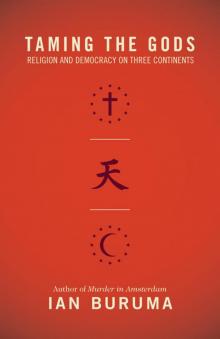 Taming the Gods
Taming the Gods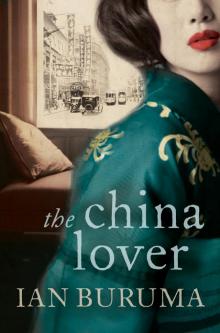 The China Lover
The China Lover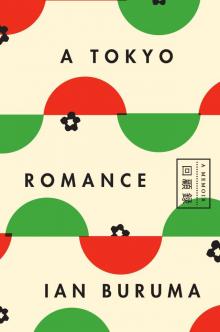 A Tokyo Romance
A Tokyo Romance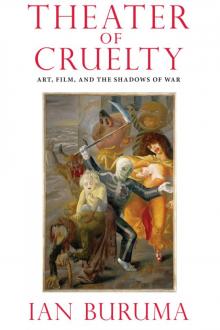 Theater of Cruelty
Theater of Cruelty Year Zero
Year Zero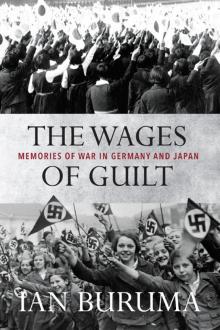 The Wages of Guilt
The Wages of Guilt Murder in Amsterdam
Murder in Amsterdam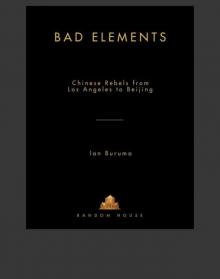 Bad Elements
Bad Elements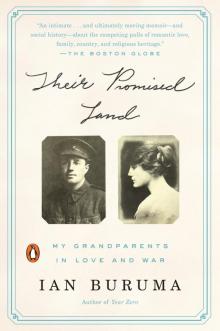 Their Promised Land
Their Promised Land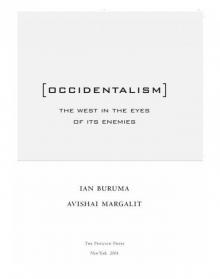 Occidentalism
Occidentalism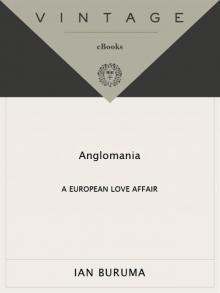 Anglomania
Anglomania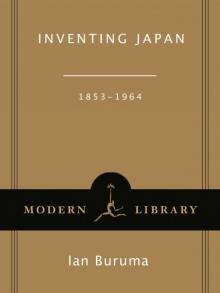 Inventing Japan: 1853-1964 (Modern Library Chronicles)
Inventing Japan: 1853-1964 (Modern Library Chronicles) The Missionary and the Libertine
The Missionary and the Libertine